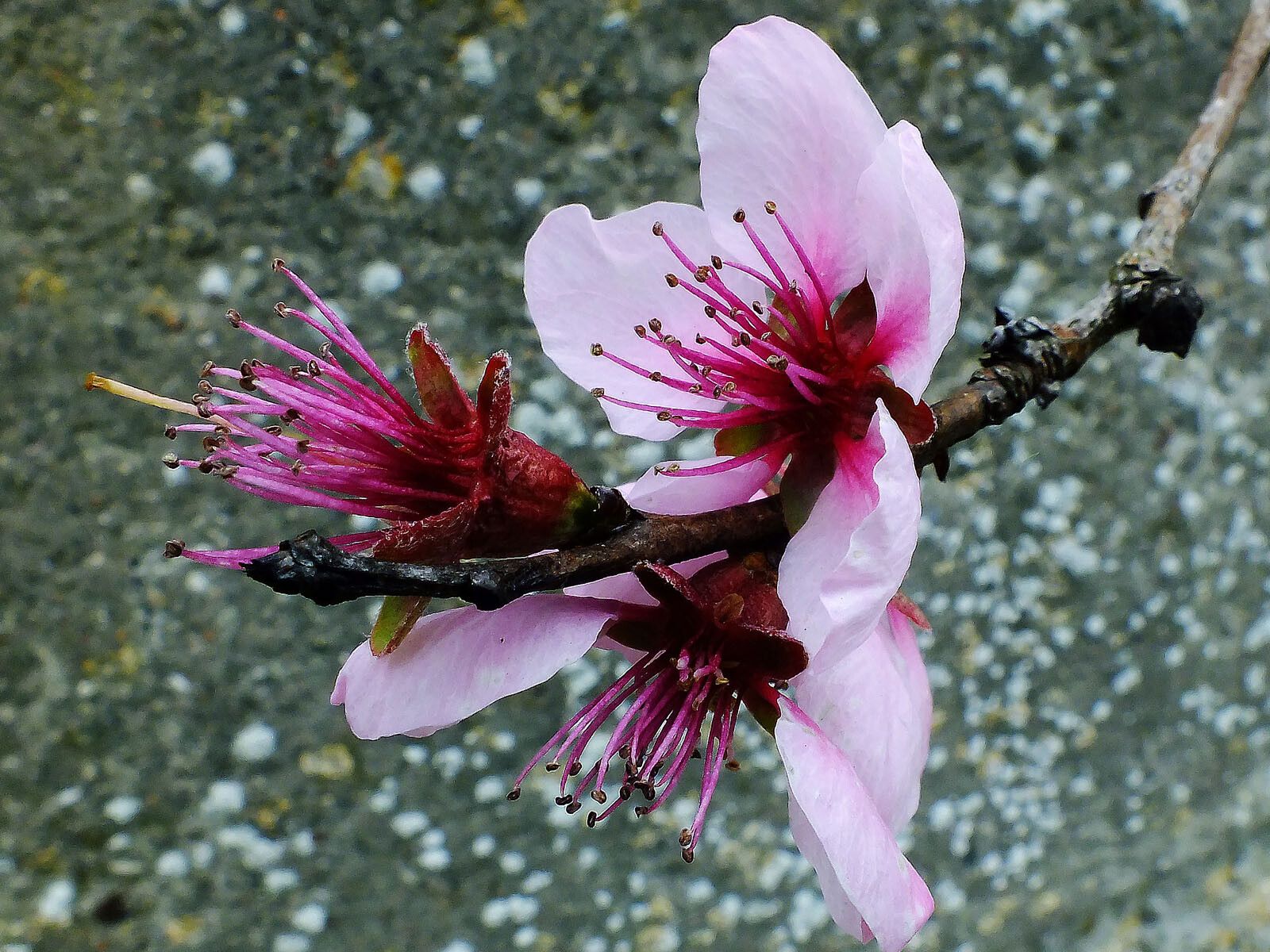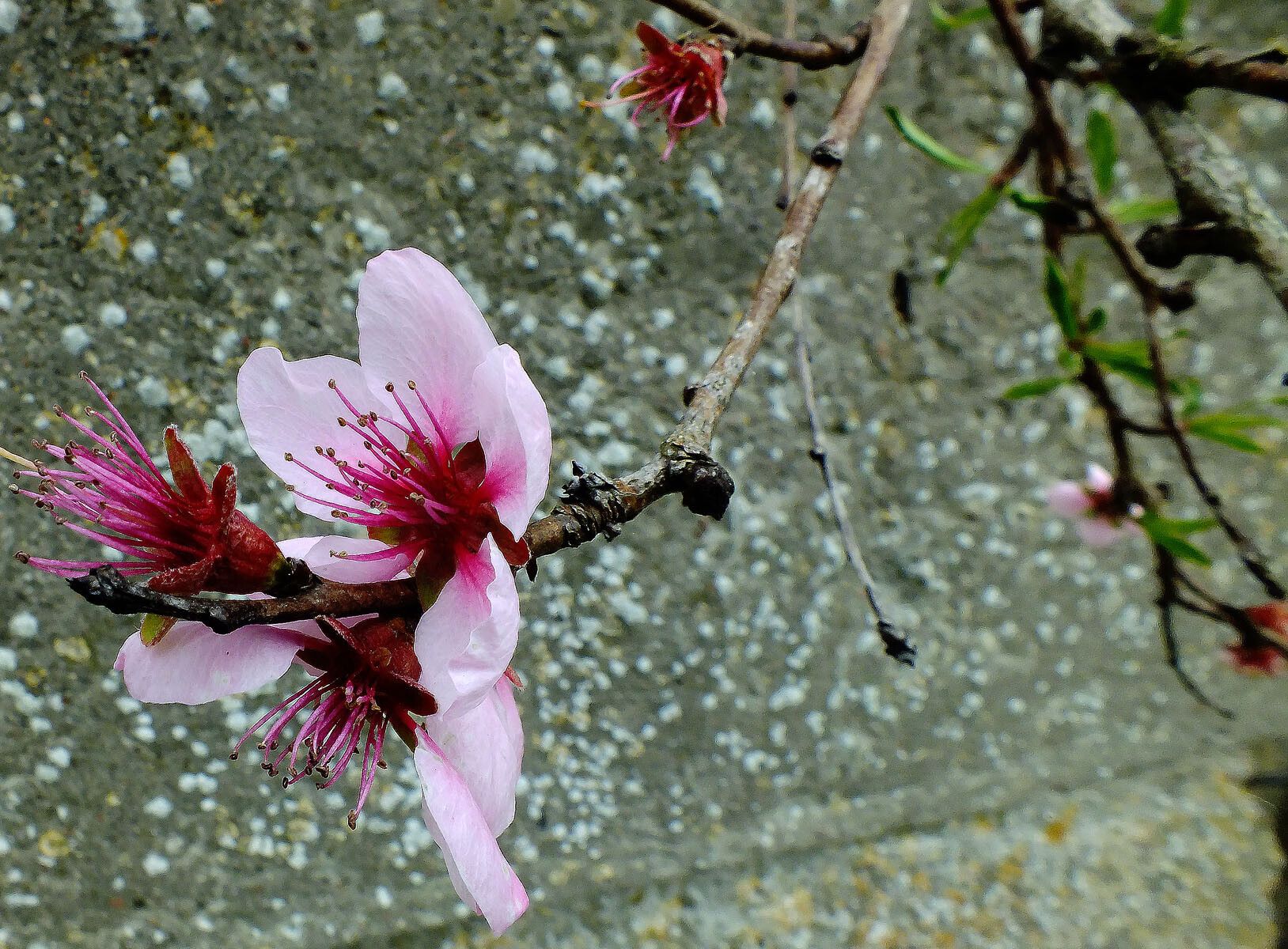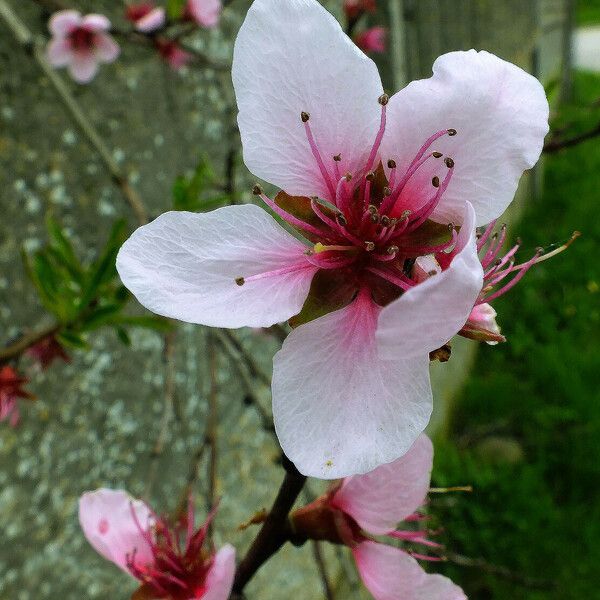Наблюдение
Определяне
Proposed determination
Най-вероятно име (Изпратено име)
100%Confidence score
Suggest another determination
You don’t agree with the suggested species but don’t have another suggestion
Коментари
Допълнителни данни
Дата на създаване
1 май 2023
Последно преглеждане
9 окт 2023
Wola Błędowa, near Bratoszewice
Synonym 'Amygdalus persica'.
Probably native to southern China, but now spread over the world.
Ornamental plant.
Edible plant - fruits raw, cooked or dried for later use, often used in ice creams, pies, jams; when fully ripe, the fruit of the best forms are very juicy with a rich delicious flavour and high vitamin C content; flowers raw or cooked, added to salads or used as a garnish[, they can also be brewed into a tea, the distilled flowers yield a white liquid which can be used to impart a flavour resembling the seed; a semi-drying oil is obtained from the seed; gum is obtained from the stem which can be used for chewing.
Herbal plant - The leaves are astringent, demulcent, diuretic, expectorant, febrifuge, laxative, parasiticide and mildly sedative; they are used internally in the treatment of gastritis, whooping cough, coughs and bronchitis; they also help to relieve vomiting and morning sickness during pregnancy, though the dose must be carefully monitored because of their diuretic action; the dried and powdered leaves have sometimes been used to help heal sores and wounds; the flowers are diuretic, sedative and vermifuge, they are used internally in the treatment of constipation and oedema; the seeds are antiasthmatic, antitussive, emollient, haemolytic, laxative and sedative, used internally in the treatment of constipation in the elderly, coughs, asthma and menstrual disorders; the bark is demulcent, diuretic, expectorant and sedative, used internally in the treatment of gastritis, whooping cough, coughs and bronchitis; the root bark is used in the treatment of dropsy and jaundice.
Useful plant - a green dye can be obtained from the leaves or yellow according to another report; a dark grey to green dye can be obtained from the fruits; the red wood is close and even-grained, hard and scented, an attractive wood with a pretty, silver grain.
Shared in
Групи (15)





